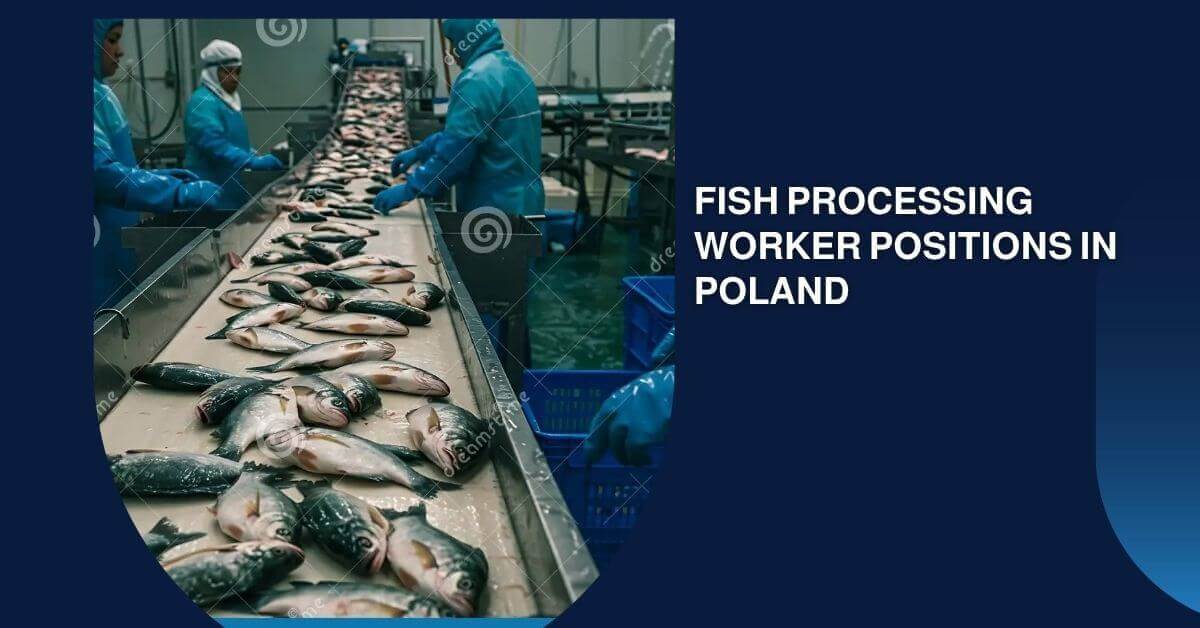Countries Offering Skill Shortage Jobs Lists With Work Visa 2025

Skill shortages persist as we transition into 2025, affecting labour markets worldwide. Numerous nations are confronted with expanding disparities in critical sectors, including healthcare, engineering, information technology, and specialised trades. Nevertheless, only a small number of governments have implemented concrete measures to strategically address these challenges, despite the fact that numerous governments recognise them.
A number of countries have now implemented official Skill Shortage Occupation Lists, which are comprehensive frameworks that identify professions that are in high demand and where local labour is insufficient to meet the requirements of employers. These lists are frequently associated with specific work visa programs that facilitate the entrance of foreign professionals who possess the necessary expertise.
This article emphasises five countries that have successfully established and sustained their skill deficiency and surplus lists, thereby guaranteeing that their immigration systems are in accordance with the realities of the labour market. In addition to identifying the most urgently required occupations, these countries also provide dedicated work visa routes to expedite the hiring of international workers.
These lists are essential resources for professionals who are proficient in foreign markets and are in search of employment opportunities. They provide assistance to applicants:
- Identify countries that are actively recruiting for their profession.
- Comprehend the visa alternatives that are available in accordance with their occupation.
- By applying for positions that are supported by national labour policies, they can increase their likelihood of securing employment and long-term residency.
This guide serves as a starting point for individuals who plan to work overseas in 2025 by concentrating on countries that are proactively addressing labour shortages through clear and actionable policies. The following is a comprehensive examination of the five countries, the professions that are in high demand, and the visa pathways that facilitate international mobility.
Check Also: Teaching Jobs in Canada with Visa Sponsorship
Benefits of Work Visa Programs:
- Legal Authorisation to Work Abroad: A work visa enables foreign professionals to legally operate in another country.
- Access to Better Job Opportunities: Work visa programs offer the opportunity to pursue career development and secure higher-paying positions in global markets.
- Pathway to Permanent Residency and Citizenship: Numerous work visa programs provide pathways to naturalisation and long-term residency.
- Better Benefits and Higher Salaries: In comparison to one’s native country, working abroad may provide superior retirement plans, healthcare, and wages.
- International Work Experience: A work visa enables professionals to acquire valuable global experience, thereby improving their resume.
- Opportunity to Bring Family: Certain work visa programs permit employees to sponsor their spouse and children.
- Employer-Sponsored Relocation & Support: Numerous employers provide assistance with visa applications, accommodation, and settling-in expenses.
- Access to High-Quality Healthcare & Social Security: Advanced medical services and government welfare programs are available to workers. Additionally, they have access to high-quality healthcare and social security.
- Exposure to a Multicultural Work Environment: The experience of working in a foreign country facilitates the development of cross-cultural communication skills.
- Opportunities for Career Advancement: Work visa holders frequently have access to professional development, training, and promotions.
- Standard of Living Enhancement: A multitude of foreign nations provide superior infrastructure, living conditions, and quality of life.
- Ability to Work in Multiple Countries: Certain work visas permit movement within specific regions, such as the Schengen Zone or the European Union.
- Access to Legal Protections and Government Support: Numerous nations implement labour laws to safeguard the rights of foreign labourers.
- Opportunities to Develop an International Network: Professionals are able to broaden their global connections and employment opportunities through work visa programs.
- Entrepreneurial Potential: Certain work visas offer entrepreneurs the opportunity to establish their own business in a foreign country.
List of Countries Offering Skill Shortage Jobs Lists With Work Visa:
The following is a list of countries that offer work visa programs for skilled shortage occupations:
1# Australia – Skills in Demand & a New Golden Era for Migrants
Australia is adopting a novel migration strategy that emphasises qualified talent with a laser focus. The government published a shortage occupation list that encompasses more than 450 professions. Australia is now actively recruiting!
In-Demand Occupations:
- Healthcare: Registered Nurses, General Practitioners, Radiologists
- Engineering: Civil, Electrical, Mining, and Mechanical Engineers
- ICT: Software Developers, Cybersecurity Analysts, Data Scientists
- Construction & Trades: Carpenters, Plumbers, Bricklayers.
Compatible Work Visas:
- The Skills in Demand (SID) Visa is a new flagship visa that has been specifically designed for in-demand positions.
- Temporary Skill Shortage (TSS) Visa – Subclass 482
- Subclass 186 of the Employer Nomination Scheme (ENS)
- Global Talent Visa
- Regional Sponsored Migration Scheme (RSMS).
Pro Tip: Regional areas provide permanent residency options that are more expeditious.
2# United Kingdom – The Post-Brexit Talent Magnet
Skilled migrants are being aggressively pursued by the United Kingdom in order to address labour shortages following Brexit. The Immigration Salary List (ISL) has been rebranded as the Shortage Occupation List (SOL) in 2025, and it is now more transparent and streamlined than ever.
In-Demand Occupations:
- Nurses, physiotherapists, and healthcare managers
- Quantity surveyors and civil engineers
- Physical scientists and biochemists
- IT Professionals: Network Engineers and Programmers
- Chefs and butchers are hospitality professionals.
Compatible Work Visas:
- Skilled Worker Visa (replaces Tier 2 General Work Visa)
- Health and Care Worker Visa (for NHS and related positions)
- Global Talent Visa (for leaders in technology and research)
- Graduate Route Visa (for international students who intend to remain in the country after completing their studies).
Fun Fact: Shortage list occupations are subject to lower salary thresholds.
3# Germany – Europe’s Engineering Powerhouse Needs You
Although Germany’s economy is expanding, its workforce is becoming increasingly elderly. Germany has updated its Skill Shortage List to ensure that it remains in alignment with global demand, with a particular emphasis on the health, IT, and engineering sectors.
In-Demand Occupations:
- Software Developers, IT Technicians
- Mechatronics, Electrical & Civil Engineers
- Nurses, Elderly Care Professionals
- Welders, Metal Workers, Electricians
- STEM Research Experts.
Compatible Work Visas:
- Germany Skilled Worker Visa (Fachkräftezuwanderungsgesetz)
- EU Blue Card (For high-earning professionals in specified occupations)
- Job Seeker Visa (6-month stay to secure employment in the local area)
- Visa of Recognition (for foreign qualifications that are partially recognised).
Are you aware? After only 33 months (or 21 months with a B1-level German language certificate), you are eligible to petition for permanent residence.
4# Sweden – A Nordic Tech & Health Hub
Sweden, the home of IKEA and innovation, has identified key skills shortages for 2025 and is currently recruiting foreign professionals in the fields of technology, engineering, and healthcare.
In-Demand Occupations:
- Civil and Electrical Engineers
- Software Developers and System Analysts
- Nurses, Midwives, Psychologists
- Teachers (especially STEM subjects)
- Automotive Industry Experts.
Compatible Work Visas:
- Sweden Work Permit (for applicants who have employment offers in the following occupations)
- EU Blue Card
- The Job Seeker Visa (New for 2025) enables individuals to enter Sweden in order to pursue employment opportunities.
- Fast Track for Healthcare Workers – Facilitates the entry into care positions by acknowledging foreign degrees.
Hot Tip: Sweden provides comprehensive family relocation benefits, free language training, and extended parental leave.
5# New Zealand – Where Nature Meets Opportunity
New Zealand is calling if you are yearning for a career in a setting that is characterised by pure air, beaches, and mountains. NZ is extending a warm welcome to skilled migrants with its updated 2025 Green List and Construction & Infrastructure Shortage List.
In-Demand Occupations:
- Civil, Structural, and Environmental Engineers
- Electricians, Plumbers, HVAC Technicians
- Doctors, Midwives, Psychiatrists
- Agricultural & Dairy Technicians
- Early Childhood Teachers.
Compatible Work Visas:
- Accredited Employer Work Visa (AEWV)
- Directly to Residence Visa (for Green List positions)
- Work-to-Residence Visa (after two years)
- Long-Term Skill Shortage List Visa.
Good News: Your path to permanent residency is among the quickest in the world, and you are permitted to bring your spouse and children.
Frequently Asked Questions:
Which countries have work visa programs for skill shortage occupations?
Countries like Canada, Australia, Germany, the UK, and New Zealand have skill shortage lists and offer work visa programs for qualified foreign workers.
How can I check if my profession is on a country’s skill shortage list?
You can visit the official immigration websites of each country, such as Canada’s NOC list, Australia’s Skilled Occupation List, or the UK’s Shortage Occupation List.
Do work visas for skill shortages lead to permanent residency?
Yes, many countries offer pathways to permanent residency for workers in shortage occupations, such as Canada’s Express Entry or Australia’s General Skilled Migration program.



